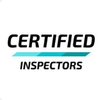Commercial roofing inspectors play a crucial role in maintaining the integrity and longevity of commercial buildings. Their expertise allows them to identify potential issues before they become costly problems. In this article, we will explore the ten most common roofing issues that inspectors encounter, along with insights on their causes and solutions.
- Ponding Water:
One of the most prevalent issues in commercial roofing is ponding water, where water accumulates in low-lying areas on the roof surface. This can lead to deterioration of the roofing materials, as well as structural damage over time. Ponding water is often caused by improper drainage or inadequate slope. Inspectors address this issue by ensuring proper drainage systems are in place and recommending corrective measures such as roof slope adjustments or installing additional drains.
- Roof Leaks:
Roof leaks can occur due to various factors, including damaged membranes, flashing issues, or poor installation. Inspectors meticulously examine the roof for signs of leaks, such as water stains on ceilings or walls, wet insulation, or deteriorated roofing materials. Identifying the source of the leak is crucial for effective repairs, which may involve patching damaged areas, replacing membranes, or resealing flashing details.
- Membrane Damage:
Commercial roofs often feature membrane systems such as EPDM, TPO, or PVC, which provide waterproofing and protection against the elements. Damage to these membranes, such as tears, punctures, or blistering, compromises their effectiveness and can lead to leaks. Inspectors carefully inspect the membrane for signs of damage and deterioration, recommending repairs or replacements as necessary to maintain the roof's integrity.
- Poor Installation:
Improper installation of roofing materials and components is a common issue that can result in a host of problems, including leaks, premature deterioration, and structural damage. Inspectors assess the quality of installation workmanship, checking for deficiencies such as inadequate sealing, improper flashing details, or improper fastening. Addressing these installation issues promptly helps prevent costly repairs down the line.
- Roof Penetrations:
Roof penetrations, such as vents, pipes, HVAC units, and skylights, create potential weak points in the roofing system that are susceptible to leaks and water intrusion. Inspectors thoroughly examine these penetrations for signs of damage, deterioration, or improper sealing. Proper flashing and sealing around penetrations are essential for maintaining the integrity of the roof and preventing water infiltration.
- Roof Blistering:
Blistering occurs when air or moisture becomes trapped between layers of roofing materials, causing bubbles or raised areas on the surface. Blistering can compromise the adhesion and waterproofing properties of the roof system, leading to premature failure. Inspectors identify blistered areas and assess the underlying causes, which may include inadequate ventilation, moisture infiltration, or poor installation techniques. Repairing blistered areas involves removing damaged material, addressing underlying issues, and applying new roofing materials.
- Roof Deterioration:
Over time, commercial roofing materials can deteriorate due to exposure to the elements, UV radiation, temperature fluctuations, and foot traffic. Inspectors evaluate the condition of the roofing materials, including membranes, shingles, coatings, and sealants, looking for signs of wear, degradation, or brittleness. Timely maintenance and repairs help extend the lifespan of the roof and prevent more extensive damage.
- Flashing Failures:
Flashing is used to seal joints, edges, and penetrations on the roof, preventing water intrusion and leaks. However, flashing can fail due to factors such as corrosion, expansion and contraction, or improper installation. Inspectors inspect flashing details carefully, looking for signs of damage, separation, or deterioration. Repairing or replacing flashing is essential for maintaining the waterproofing integrity of the roof system.
- Poor Drainage:
Inadequate drainage can lead to ponding water, which accelerates roof deterioration and increases the risk of leaks and structural damage. Inspectors evaluate the roof's drainage system, including gutters, downspouts, and drains, to ensure proper function and clear any obstructions. Improving drainage helps prevent water buildup and prolongs the lifespan of the roof.
- Lack of Maintenance:
Neglected roofs are more susceptible to damage, leaks, and premature failure. Regular maintenance is essential for preserving the integrity and performance of commercial roofing systems. Inspectors emphasise the importance of proactive maintenance practices, such as periodic inspections, cleaning, and repairs, to address issues promptly and prevent costly damage.
Conclusion:
Commercial roofing inspectors play a critical role in identifying and addressing common roofing issues to ensure the longevity and performance of commercial buildings. By understanding the causes and solutions for these issues, property owners can take proactive steps to protect their investment and maintain a watertight, durable roofing system.

No comments yet